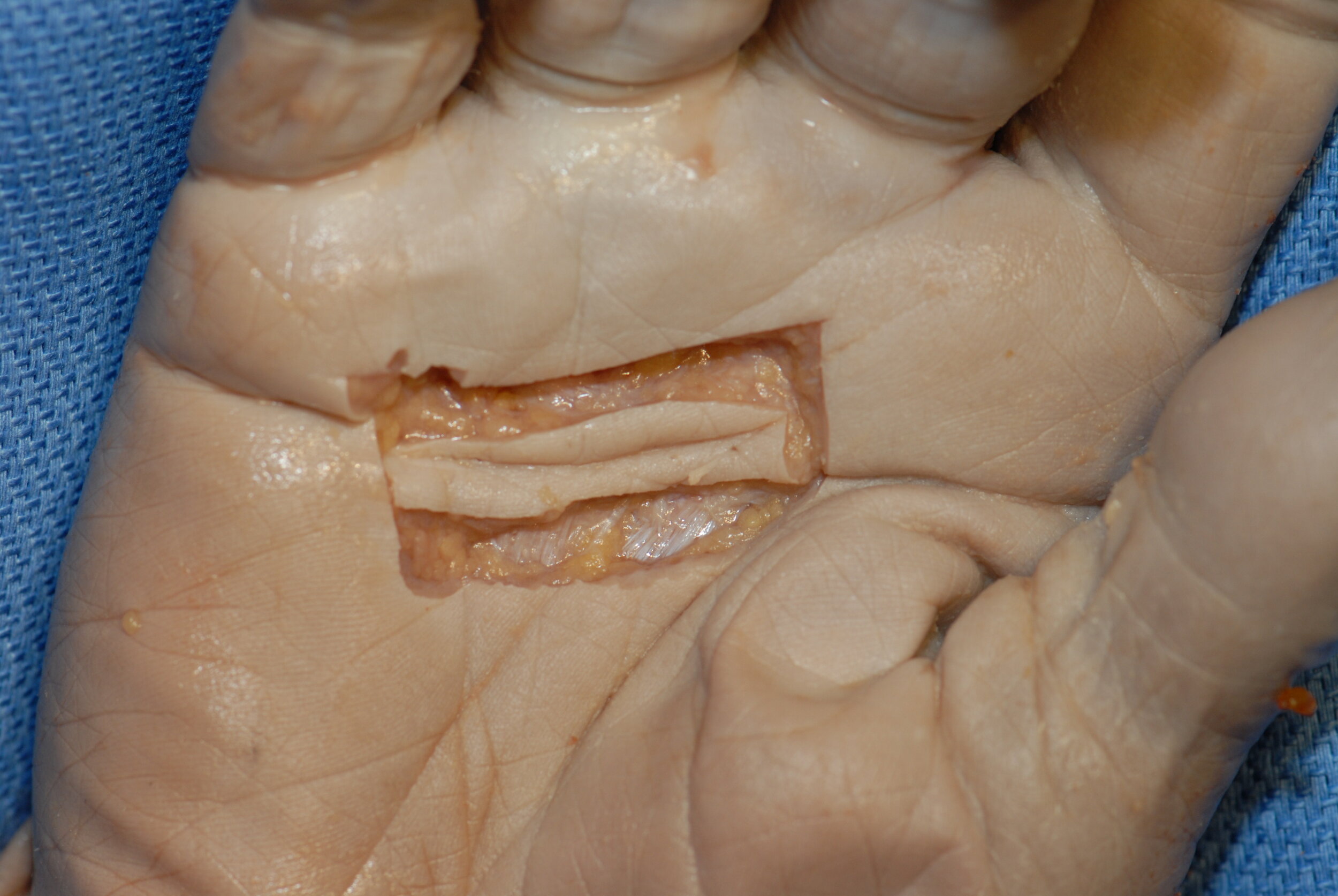Palm, Sole of Foot, Wrist and Ankle Tethers
We physically interact with our environment most of all with our hands and perhaps secondarily with our feet. Examples of very short, tight tethers between the skin and underlying fascia are those in the palms of our hands and soles of our feet. Denser anchoring tethers form the palmar creases. These visible boundaries help to leverage muscular movement and store skin for use when you extend and spread your fingers and palm. Tight palmar tethers also facilitate gripping and grasping objects, like opening jars. Similar to the palm, short, tight skin-fascial tethers on the bottom of your feet help prevent slippage. An increased density of nerve endings passing through the Cinderella Layer here allows for proprioceptive stability or position sense.
The volar (palmar) wrist creases are good examples of accordion-like tethers that store and release skin folds for wrist motion. These attachments help to form the folds we see with wrist flexion. As the wrist extends for power grip, the accordion-like volar folds expand and flatten. Reflexive positioning in flexion helps to shield the wrist and palm from injury. This is facilitated by the elasticity or recoil of the subcutaneous tethers back to a resting position or tone. Protective posturing also exists around other joints like the inside of the elbow, back of the knee, the axilla and the anterior neck. The volar distal wrist crease is a critical boundary marking the visible and functional differences in texture, color, thickness and adhesion between the forearm and palmar skin. Tight tethers to the bony periosteum behind each ankle bone (malleolus) work together with loose filmy tethers over the malleoli and distal Achilles tendon to facilitate a smooth gliding motion at the ankle.






